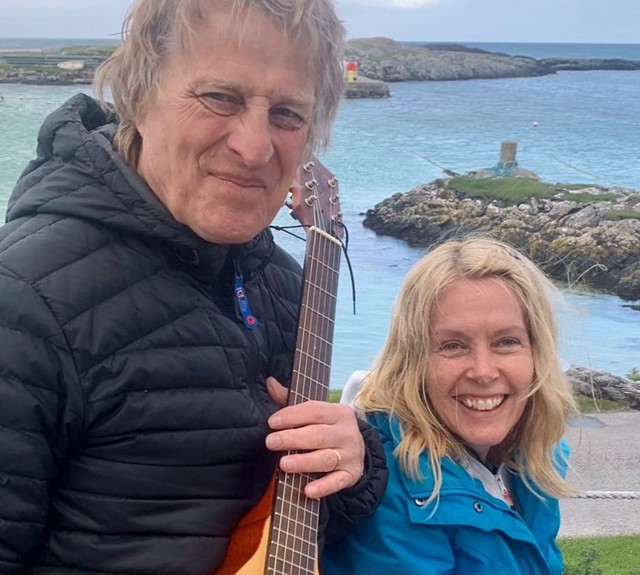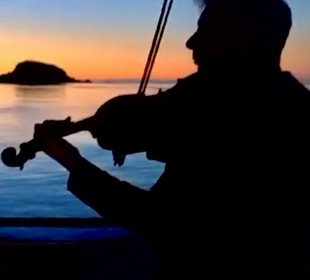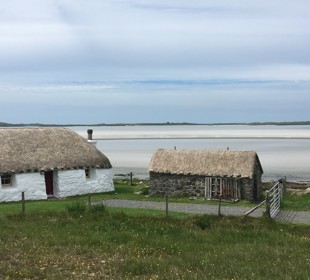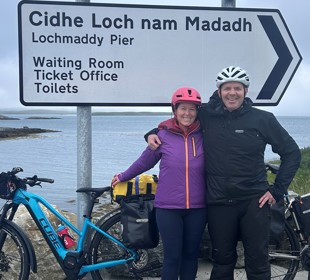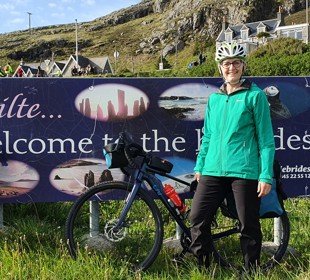Mobile menu
9 October 2025
A Beginner’s Guide to Learning Scottish Gaelic

Thinking about learning Scottish Gaelic? There’s no better time than during the month of the annually celebrated Royal National Mòd, where Gaelic is alive in song, story and community. Whether you’re starting from scratch or simply curious, Gaelic can open doors to culture, connection and the beauty of Scotland’s islands. Here’s how to get started.
Why Gaelic matters
Gaelic is not just a language — it carries centuries of tradition, poetry, and song. At the Mòd you’ll hear it everywhere, from choirs and ceilidhs to poetry recitals and children’s competitions. Even a few words of Gaelic can help you feel part of that community, and contribute to keeping the language thriving for future generations.
First steps: structured learning
If you’re looking for a reliable starting point, Opens in new windowLearnGaelic’s Beginner CourseOpens in new window is a free, step-by-step introduction with audio lessons and quizzes. It’s designed for absolute beginners and builds gradually.
For a more modern, multimedia approach, Opens in new windowSpeakGaelic offers structured lessons aligned to international language levels, with podcasts, TV episodes and digital content to support your learning.
Apps can also help. Opens in new windowDuolingo's Scottish Gaelic course is popular for bite-sized practice, though it works best alongside more in-depth resources.
Listening and immersion
Language lives in voices — and one of the best ways to absorb Gaelic is simply by listening.
A great place to start is the Opens in new windowScottish Island Adventures Podcast. Hosted by Coinneach MacLeod, the Hebridean Baker, and Natalie Galloway, the series celebrates island life while weaving in Gaelic phrases and songs. In episodes recorded on Jura, for example, Coinneach sings in Gaelic, letting listeners experience the music of the language in a natural way. There's also a dedicated episode celebrating the Royal National Mòd to enjoy.
You can also tune in to BBC Radio nan Gàidheal or learner-friendly shows such as Litir do Luchd-ionnsachaidh (“Letter to Learners”), which provide a steady stream of spoken Gaelic.
Practical tips for beginners
-
Start small: learn greetings like madainn mhath (good morning) or tapadh leat (thank you).
-
Practice often: short, regular sessions beat occasional long ones.
-
Join community groups: many online forums and local classes welcome beginners warmly.
-
Don’t fear mistakes: Gaelic has regional differences — speaking, even imperfectly, is progress.
From the Mòd to everyday life
The Royal National Mòd is the perfect stage to celebrate Gaelic. As you listen to choirs, watch performances, or hear poetry spoken aloud, you’ll notice familiar words and phrases coming to life. That spark of recognition can be motivating. You can enjoy the winning performances from each days competitions, on BBC Alba.
With tools like LearnGaelic, SpeakGaelic, and cultural content such as the Scottish Island Adventures Podcast, BBC Alba, and Radio nan Gàidheal, you don’t need to live in the Highlands or Islands to bring Gaelic into your everyday life. Start with a phrase, enjoy the sound, and build from there.
